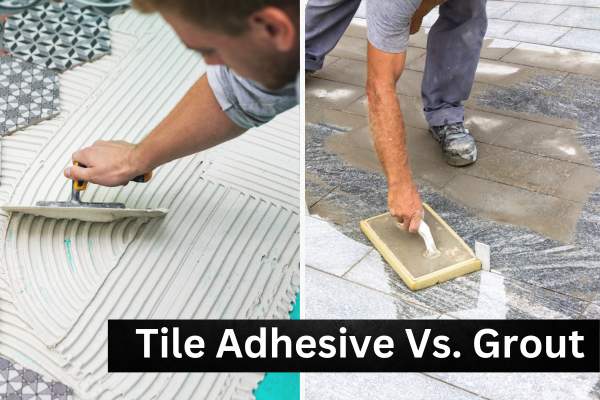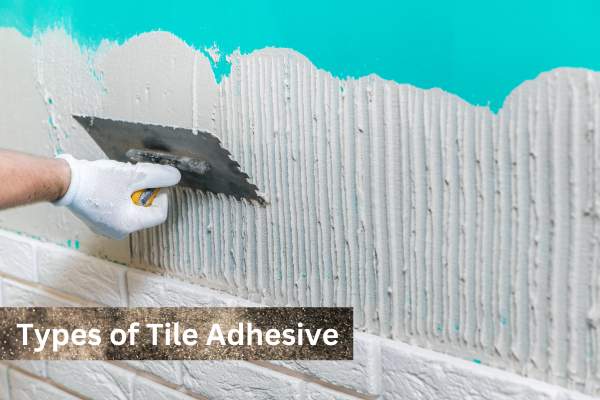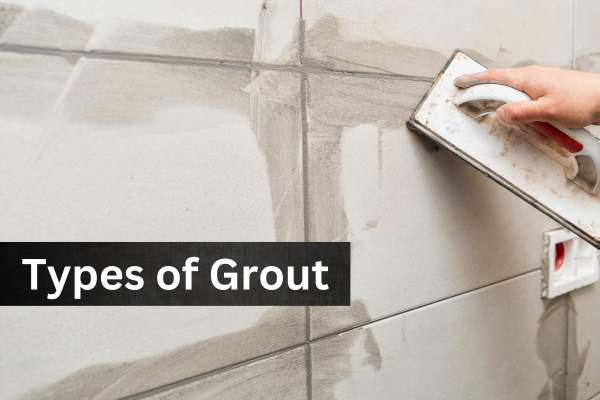Tiling the house provides a luxurious look. Most floor tiles are suitable for high-traffic regions, and they are durable.
Tiling makes the cleaning process convenient, as tiles require low maintenance.
The benefits of tiling have made installing tiles a popular flooring option.
However, to ensure durability and high quality, you must check the type of tile, the installation process, and many other factors.
Tile adhesive and grout are two products frequently used in tiling projects. Many people need clarification on tile adhesive and grout. They also wonder whether they can use grout as tile adhesive.
In this blog, you will learn about tile adhesive and grout and the purpose of using these products.
Tile adhesive is a bonding agent that sticks tiles to their subfloor or substrate.
According to the tiles, substrate, and surface, the type of tile adhesive most appropriate for the project will differ.
On the other hand, grout is a fluid used to fill the gaps between the tiles. You can also use grout to align the joint. Grouping is an essential step that ensures the durability of the tiles.
Purpose Of Using Tile Adhesive Vs. Grout

Are tile adhesive and grout the same?
Tile adhesive and grout are two different products. However, there are situations where people use grout as a tile adhesive.
Sticking tiles together using grout is possible, but this method is not recommended.
Hence, using the appropriate product for the intended purpose is crucial to ensuring a professional finish and durability.
Let’s discuss the purpose of using tile adhesive vs. grout.
Purpose of Using Tile Adhesive
The main purpose of using tile adhesive is to bond the tiles to the substrate. You may apply the tile adhesive to the substrate or the back of the tiles and then stick them together.
The two major types of tile adhesives are sand-cement adhesive and ready-mixed adhesive. After laying the tiles, you must wait patiently until the adhesive cures.
The curing time of the tile adhesive will be approximately 24 to 72 hours. This curing time may change according to the type of tile, tile adhesive, tile size, humidity, and surrounding temperature.
Purpose of Using Grout
The primary purpose of using grout is to fill gaps and seal joints. After installing tiles, you may notice gaps between the tiles. These small gaps are filled using grout.
Some people consider grouting an optional step when tiling. Although it is possible to skip this step, most experts encourage applying grout.
Grout will fill the gaps and prevent water from penetrating through the holes and weakening the tile adhesive. Grout is used once the tile adhesive is completely cured.
Shelf Life Of Tile Adhesive Vs. Grout
The shelf life of powder-based and ready-mixed tile adhesive is between 6 months and one year.
On the other hand, the shelf life of both powder-based and ready-mixed grout is 12 months from the manufacturing date.
However, once opened, the shelf life reduces to 6 months.
Types of Tile Adhesive

There are different types of tile adhesive. Knowing about these tile adhesives will help you choose the appropriate bonding agent for your tiling project.
You can use a few common types of tile adhesive when sticking tiles to the subfloor.
Epoxy Mortar
Epoxy mortar is the strongest bonding agent made using solvent, binder, mineral fillers, epoxy resin, and additives. This tile adhesive helps bond the tiles strongly to the substrate.
Some of the benefits and disadvantages of epoxy mortar are given below.
| Advantages | Disadvantages |
| Extremely strong and harden well so that the adhesive tightly grips the substrate and the tiles. | Since epoxy mortar dries faster, this leads to a shorter working time, although applying this adhesive takes a long time. Hence, you cannot use epoxy mortar for a wide area. Instead, lay them in stages. |
| Suitable for different tile materials | Compared to other adhesives working with epoxy mortar takes a lot of work. Therefore, adding water to this adhesive will make it more workable. |
| It cures quickly and has impermeable water features. | |
| There are different colored epoxy mortars available on the market. | Adding excessive water will result in adhesive failure. So, determine how much water you can add to these bonding agents. |
| This non-sag and non-slip tile adhesive is highly durable. |
Tile Mastic
This tile adhesive is mainly preferred by beginners installing tiles for the first time. Tile mastic is very convenient, and the cleaning process is simple.
Following are some pros and cons of using tile mastic to adhere the tile to the substrate:
| Advantages | Disadvantages |
| The ready-mixed tile adhesive is easy to use. Even beginners can conveniently handle this type of tile adhesive. | It is not waterproof, so this adhesive is unsuitable for highly moist regions since moisture can weaken the strength of tile mastic. |
| This organic adhesive forms a strong bond between the tile and the subfloor. | This adhesive is not heat-resistant. |
Note: Tile mastic is appropriate for walls and kitchen backsplashes, as these places are not exposed to heat or moisture.
Thinset Mortar
Cement, sand, and water are the raw materials for making thin-set mortar. This tile adhesive is mainly used to bond wall tiles.
The dry mix of thinset mortar requires pre-preparation; you must add water and mix it well before application.
In contrast, ready-mixed thinset mortar can be directly applied without pre-preparations.
The pros and cons of thinset mortar are as follows.
| Advantages | Disadvantages |
| Thinset mortar is an affordable tile adhesive that is widely available. | Cured thinset mortar is very inflexible. |
| You can quickly spread thinset mortar using a trowel. This adhesive helps to even up the subfloor. | The gray, dull look of the thinset mortar does not make the project visually appealing. |
| Provide extra working time as the adhesive takes time to cure. | Unmodified thinset mortar will be too runny for vertical tile installation. |
| Compared to other tile adhesives, thinset mortar is water-resistant. | It takes too long to cure. |
Types of Grout

There are different types of grout that you can use to fill the gaps between the tiles. The main types of grout are given below.
Cementitious Grout
The primary raw material used to make this grout is cement. Water-retentive additives, color pigments, and filler particles are a few other materials used when manufacturing cementitious grout.
This grout can be used in residential and commercial tiling projects. Sanded and unsanded grout are the two types of cementitious grout.
Furan Resin Grout
Furan resin grout is made using fortified alcohol. This type of grout can be used on tiles subjected to harsh chemicals.
For example, when tiling laboratories, you can use furan resin grout to fill the gaps. Inhaling this grout can cause harm to your health.
Therefore, ensure to wear safety gear when dealing with furan resin grout.
Epoxy Grout
Expoxy resin, silica fillers, hardeners, and pigments are used to manufacture epoxy grout. Since this grout is less porous, you can use it when tiling places like the kitchen.
Expoxy grout sets faster and comes in both sanded and unsanded varieties. This grout is stain-resistant but may get stained over time.
Conclusion
Reading the blog, you might understand the differences between tile adhesive and grout.
Hence, the two products are different; although grout is rarely used to fix tile pieces, the best practice is to use these products for their intended purposes.
Tile adhesive will help stick the tiles to the substrate, while the grout fills the gaps between the tiles.
Further, choosing the right tile adhesive and grout suitable for your tiling projects is essential.
FAQs
Can I Use Grout As Tile Adhesive?
You can use grout to adhere the tile to its subfloor or substrate.
Using grout to install tiles is not recommended, as you cannot ensure reliability and durability.
Can I Use Tile Mastic For the Bathroom?
No, tile mastic adhesive is not suitable for high-moisture regions like bathrooms.
For such places, a waterproof adhesive like thinset mortar is better.
Is Epoxy Grout Stain Resistant?
Yes, epoxy grout is stain resistant.
Over time, there are possibilities for the epoxy grout to get stained.
